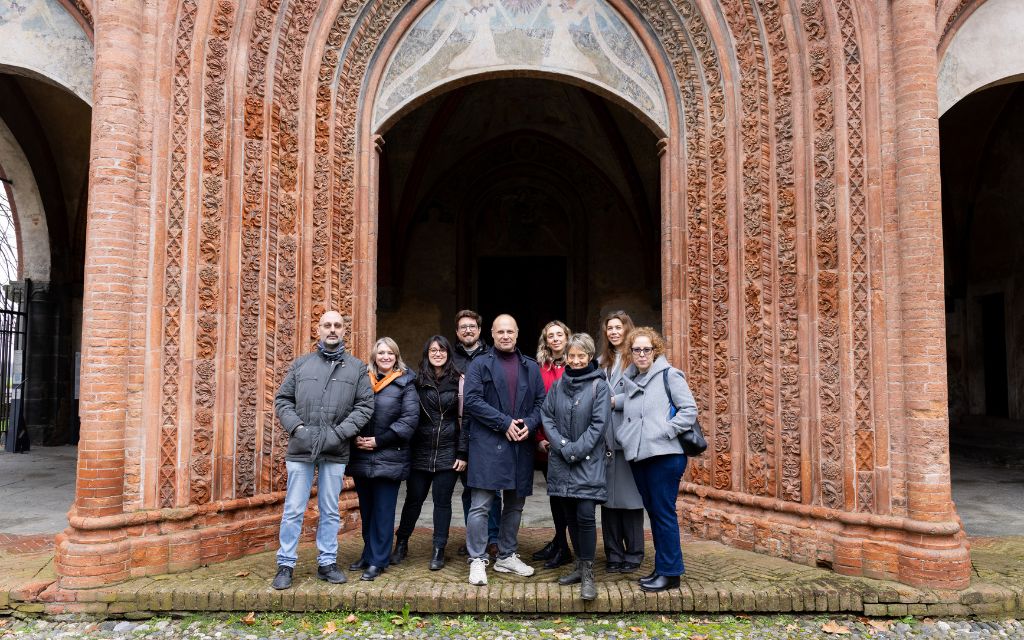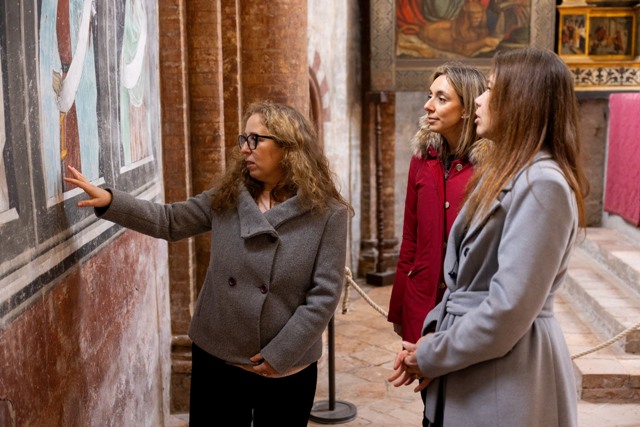Read about our visit and insights from the 20th-anniversary conference of the Centro Conservazione Restauro La Venaria Reale.

Technology for the Future of Cultural Heritage: The Ranverso Case
The Preceptory of Sant'Antonio di Ranverso, a stunning example of medieval architecture located along the historic Via Francigena near Turin, is at the forefront of innovative heritage conservation. As part of the ARGUS project, an EU-funded initiative aimed at using AI-powered monitoring and remote sensing, Ranverso has become a testing ground for non-invasive preservation techniques.
Celebrating Conservators: The 20th Anniversary Conference of CCR La Venaria Reale
The Centro Conservazione Restauro la Venaria Reale, a leader in cultural heritage restoration, marked its milestone anniversary with a series of discussions on conservation, research, and innovation. Among the speakers were George Pavlidis, Research Director at the Athena Research Centre, and Mara Mennella from KNEIA SL. They presented insights into the ARGUS project, emphasizing the role of AI, remote sensing, and digital twins in heritage conservation. A key takeaway from the conference was the growing importance of interdisciplinary collaboration.

On-Site Visit to the Preceptory of Sant'Antonio di Ranverso
Following the conference, on March 22, 2025, experts, researchers, and conservation professionals gathered at the site, where the ARGUS project is being implemented. The day’s schedule was structured to maximize hands-on learning and collaboration. This visit provided a unique opportunity to witness firsthand how digital infrastructure, sensor-based monitoring, and predictive analytics are integrated into the conservation strategy at Ranverso. The Fondazione Ordine Mauriziano, managers of the site, was also present to explain the unique characteristics of the site.

The Impact of the ARGUS Project
The ARGUS project stands at the intersection of technology, research, and cultural preservation. By leveraging digital tools, it enables more effective risk assessment and conservation planning, especially for remote and vulnerable heritage sites like Ranverso. Key innovations include:
- AI-driven analysis for early detection of structural issues.
- Remote sensing technology to monitor environmental and climatic impacts.
- Predictive modeling to inform long-term conservation strategies.
By fostering cross-border collaboration and aligning with EU-wide heritage protection efforts, ARGUS is setting new benchmarks in cultural heritage management.
As the project progresses, continued interdisciplinary efforts will be essential in refining these technologies and ensuring their effectiveness. The successful application of ARGUS at the Preceptory of Sant'Antonio di Ranverso serves as a model for similar initiatives across Europe.
Stay connected for updates on how the ARGUS project evolves and contributes to the future of heritage conservation!